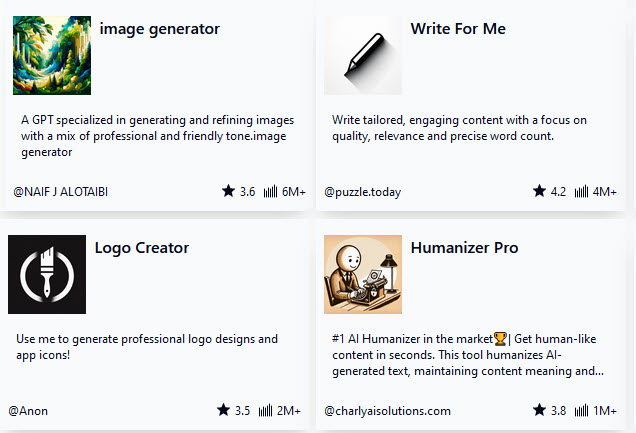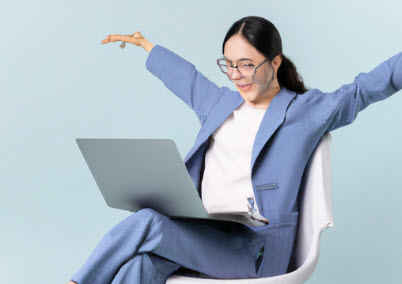From my experience, and the experiences of my colleagues and students, online learning and teaching have gained significant popularity on a global scale in recent years.  Hui & Yunus (2023) suggest that teachers could benefit from a revision in curriculum to support modernized online teaching approaches that help foster a motivating, authentic, and satisfying online learning environment with the goal of promoting a sense of student autonomy. Implementing proper strategies could result in better learning. Continue reading
Hui & Yunus (2023) suggest that teachers could benefit from a revision in curriculum to support modernized online teaching approaches that help foster a motivating, authentic, and satisfying online learning environment with the goal of promoting a sense of student autonomy. Implementing proper strategies could result in better learning. Continue reading
Tag Archives: technology
GPTs for Language Instructors
I know this is going to be confusing, so let me try to sort out this alphabet soup. GPT, or Generative Pre-trained Transformer model, is a type of artificial intelligence model developed by OpenAI. You should be familiar with ChatGPT, which is the most common tool. For language instructors, these tools can perform various tasks such as language translation, text summarization, question answering and much more, including:
- content creation
- customer support
- educational tools
- personalized learning experiences
- research assistance.
Make Your Word-Processed Documents More Accessible
Most of us are aware of the importance of the issues around digital accessibility through our own disabilities and supporting our students in virtual and blended classrooms. Some organizations offer accessibility training for educators and learners. Due to accessibility legislation and policies, software vendors build accessibility features into their wares. This opportunity allows us to make our documents more accessible. This post suggests some features available in the Microsoft Word app that instructors may leverage to make their digital documents more accessible. Please be aware that this is not a comprehensive accessibility resource, but an introduction for interested educators. Continue reading
Simplifying Real-World Content with ChatGPT and the Canadian Language Benchmarks
Lesson planning can be a time-consuming endeavor, especially for educators teaching students with lower levels of English proficiency. Adapting materials to meet the needs of these learners requires careful consideration and often entails significant effort. However, with the assistance of tools like ChatGPT, this process can be streamlined and made more efficient.
Continue readingSmartphones can be a “Smart” Helper in the Classroom
At first glance, smartphones may seem like the ultimate language roadblock for ESL learners. The alluring prospect of effortlessly translating any text with a simple tap can lead to a habit of overreliance, hindering genuine language absorption. However, it’s not all doom and gloom. When approached with a strategic mindset, smartphones can indeed become “smart” tools in the ESL learning arsenal, especially for those who find themselves grappling with the complexities of English at a foundational level.
Continue readingAI in ESL: Empowering Learners and Bridging Language Gaps
By Margaret Holec
Introduction
The past decade has seen a game-changing impact on English as a Second Language (ESL) education, thanks to Artificial Intelligence (AI). Notably, AI has made students more independent in their learning, helping them secure jobs even with lower English levels. Additionally, direct translation of messages and emails has become seamless, enhancing communication.
1. Independent Learning: AI’s Role in Student Empowerment
AI in ESL education has shifted the focus to personalized learning, allowing students to learn at their own pace. This independence builds confidence and self-reliance as learners navigate language acquisition with tailored support.
Continue readingCoping with the AI Challenge
September is here! The past eight months of warnings of artificial intelligence- or AI- generative chat calamities were heeded by some and ignored by others. Hopefully, you are one of the fortunate ones who work in an institution where AI policies, guidelines, just-in-time support and plagiarism teaching-learning plan statements are ready and accessible to supervisors, instructors and learners. If this is not your situation, this post is for you. Read on to quickly pick up some tips to cope with AI generative chat technologies while your institution works towards comprehensive strategies.
ChatGPT Extensions: Make it Your Personal Assistant
Whether you’re aware of it or not, the recent release of artificial intelligence-powered chatbots is transforming the way we interact with technology. OpenAI’s ChatGPT, Chat Generative Pre-Trained Transformer, allows anyone to engage with it in a human-like manner to achieve a response. Over the past few months, scores of GPT-powered web apps and browser extensions have appeared due to AI-powered chatbots resulting from the release of the OpenAI’s GPT API (applications programming interface). The API allows apps to work with ChatGPT. This allows software developers to create more powerful applications. The browser extensions described below will help language instructors use ChatGPT more effectively to enhance their lessons and daily digital tasks.
Continue readingAI in the Classroom: The New, New Normal?
In December of 2022, Cecilia Aponte-de-Hanna brought the discussion of artificial intelligence or “AI” to the TESL Ontario community with her post, AI in the Classroom: Love It or Hate It – It’s Here. Cecilia piqued our curiosity by showing us an example of a test text generation and suggested three ways that she was considering using AI with her lessons.
Continue readingFirst Day Back

As the streetcar lurched toward George Brown College, I gazed at the familiar storefronts, churches, and coffee shops that lined the route. How could everything be the same when it felt so different? I was nervous, panicked even. After all, I hadn’t taught in-person for close to three years. I berated myself for checking off the box to teach on campus. Wasn’t it easier to stay enclosed in my basement lair? I rechecked the supplies in my backpack and pulled out the instructions sheet for the tenth time. Offices have moved here, photocopiers are now there; do this if you need to print something, do that to access the computer system. Ughh.
Continue reading







